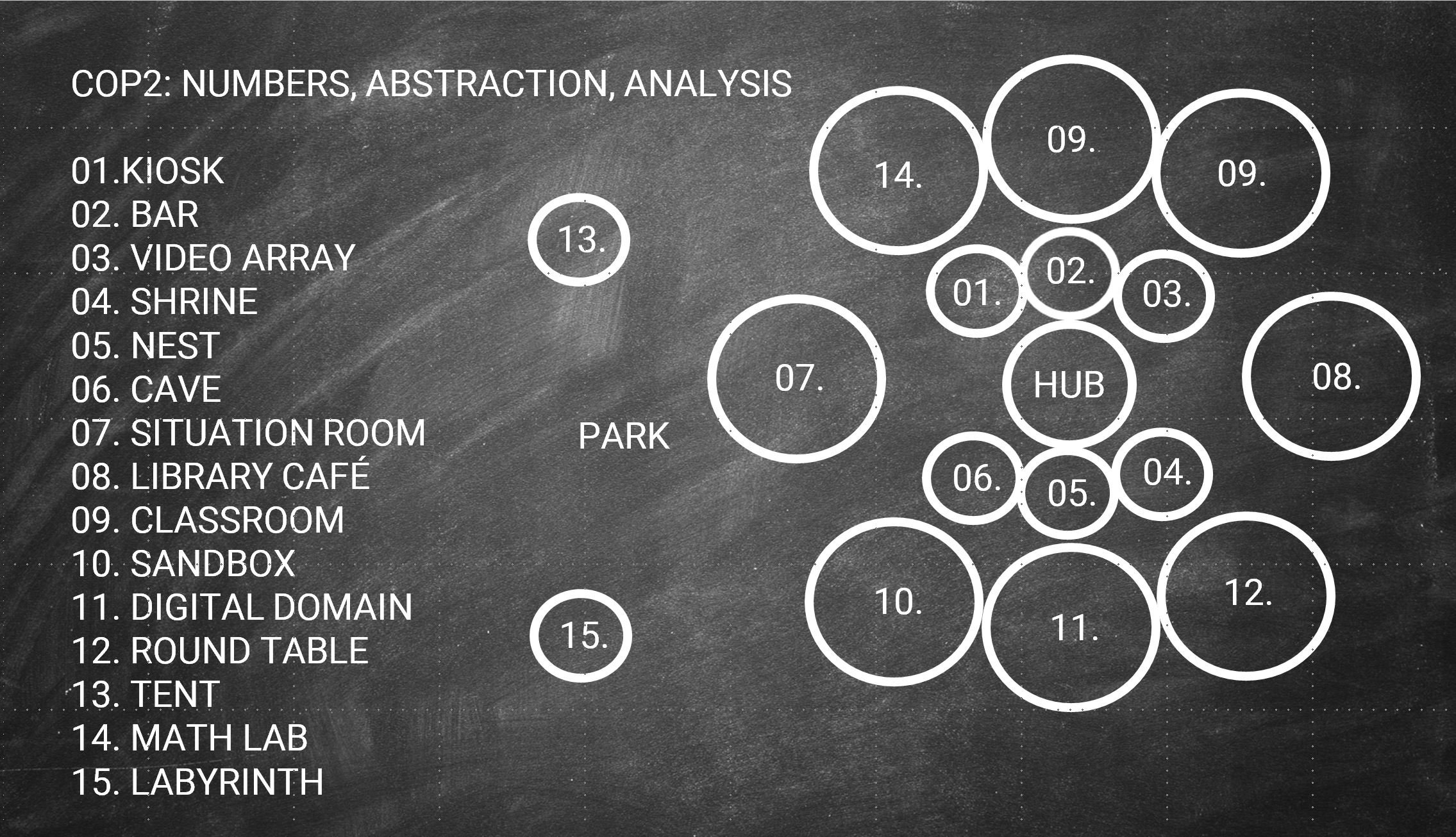Professional Learning Communities
To realize Educational Ecosystems, we need to reconsider the idea of one teacher/one classroom. To liberate schools from repetitive classrooms, we need to offer teachers a supportive, professional environment elsewhere, an environment dedicated to creating community and fostering collaboration. We need to reimagine schools around the idea of Communities of Practice, also called Professional Learning Communities (PLC).
Functionally, how does this work?
The diagram presented above shows a central Hub, the heart of a PLC, a semi-public/semi-private zone in which teachers find personal workspace, work tables for collaboration, and storage for the teaching materials that are now shared instead of isolated.
What is a hub like? My own image of it resembles a coffeeshop, but I’m a caffeine addict.
This image isn’t exact, but it depicts some key ideas: a variety of furniture, a help desk or genius bar to assist students, access to the outdoors, refreshments, walls of inspirational material…I would only expect to include workstations for each teacher, and of course storage space.
A public zone of inspiration surrounds the Hub. Here we would find pop-up kiosks, media booths, video arrays, shrines, markets, a speakers corner, perhaps a library cafe, and nests and caves for quiet work.
Beyond this Zone of Inspiration, we would find a rich array of discrete educational environments. here we would find situation rooms, traditional classrooms, sandboxes, round tables, workshops and so forth: depending on the focus of the PLC, the environments that would serve it best.
How does this play out?
Imagine, for example, a PLC focused on the language of data and analysis. Selecting from the complete menu of educational environments, the number of spaces depending on the student/teacher ratio and number of students served, the PLC might be diagrammed as follows :
Or imagine a PLC dedicated to words and stories both foreign and domestic. It might be diagrammed as follows:
Or consider a PLC focused on objects, making, assembly, invention:
We can organize a school in any number of ways. Consider a PLC devoted to adventure, discovery, the Earth and Outer Space:
Each of these PLCs can then be consolidated into a single building for efficiency, or pulled to different corners of a campus to encourage unique identities and more physical activity, or pulled even further apart to inhabit a town, perhaps connected by bike paths, to allow each PLC to co-create learning experiences with the resources available in town.
For districts aligned with a traditional view of risk, security, and student safety this last model might be a non-starter, but there is a view towards security that suggests integration is far more secure than isolation.
The bottom line: whether consolidated, pulled apart, or fully dispersed, a school designed around professional learning communities, an educational ecosystem, offers teachers the community and collaboration that promises to keep the younger, less-experienced among them supported, while offering students a rich array of engaging experiences.
This is my vision of the future of school.
Your thoughts on this journal post are highly valued, as I continue to build and refine my perspective on schools and the school environment. Please share your own experiences and perceptions of the school environment below!





